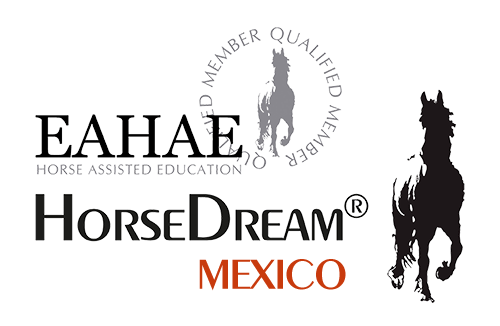Change Management
We are aware and perhaps agree that, in terms of methodology, there is no single best way to implement change. What can be successful in one context and at a particular time may not be successful for other organizations operating in different contexts at a different point in time.
I´m convinced and I support that, the methodology we choose, largely determines what we discover. Horse Assisted Education is an extraordinary way to reach full discovery. Choosing to face changes among horses reduces the context bias and enhances the success of management.
The starting point for any organizational change is when a “need for change” is observed. The reasons may be either reactive– the organization must respond to internal or external pressures, or proactive, with which it responds to future competitive demands.
Especially in small businesses, We so often see that it is the manager who decides change is needed. It starts with him/her, often without consulting and debating with the rest of the company and without spreading that need for change to the rest of the organization. So, if this sounds familiar to you, what follows might be interesting and useful to you and I will explain why.
When horses need to make a change, they just do it on behalf of what is best for the herd. They don´t give that much time to think or rethink if there’s another way to do it. They know what and when to act and they do it.
When teams work in the arena with horses even for a short time, they shift their understanding and acceptance by changing the “I need” to “I Want”.
But how might that be possible to achieve in such a short time? Perhaps you might ask.
Well, here is one of the profound reasons to work with horses.
Think about any time when you forced yourself to do something, especially if you were not convinced. Did you notice that your feelings and emotions tended not to be synchronized with your thoughts? That means that there’s no coherence nor alignment in you. When horses sense that there’s no coherence in you, they will not follow you and then, most of the time, it will start an internal fight between mind and feelings.
So, horses might be sharing with you the way your team might be feeling about and perceiving you. It will lead to a feeling (and thinking) of a lack of accountability that will create resistance in them.
Feeling that you must do something is very different when you are feeling that you WANT to do something, and working with your team and the horses, results in a meaningful experience that those of us in horse assisted education refer to as “emotionally experienced”.
So, there´s no need to have someone reminding the team why change is needed. it´s the team per-se that switches the energy and the internal mindset from a “need” mode to an “I want to” mode.
And there´s more, back in the office, this experience will last, enhancing and uplifting performance for all the team. What’s more, it will just take a single talk, reminder, picture or video to connect again with that moment, so no extra words are needed, just reconnecting to that lasting feeling l.
We use the Appreciative Inquiry method applied in the change management process, Appreciative Inquiry focuses on change processes of companies and their teams. As Gerhard Krebs, HorseDream Director wrote once. “In the learning process, the horses act as emotional bridges between the participants/team members. Therefore, they reveal commonalities and build an understanding of the differences between the participants. Change management processes that have been rationally planned and organized become emotionally experienced”
The appreciative Inquiry method proposes that truth is not an individual heritage but collectively and that only collectively can we find it.
The value of this change management methodology is right here: Move team members to a position where they can collaborate much more easily and work as a team, rather than fighting every day in the office to become a unit.
Change Management is inspiring in the design of the future.
So, the question is: Is it better to inspire the whole company by sharing what could be?…or reminding everyone that they are currently doing things the wrong way?
If you go to talk to a friend about changes occurring at your work, what would you prefer to say to your friend about this? “I want…” or “they said I must…”.
Horse assisted education is the difference between switching
from: “Having training issues” to “Having issues with the training”.
Holistic Horses™ & HorseDream™ México
Academias Premium en Consciencia, Comunicación y Liderazgo
